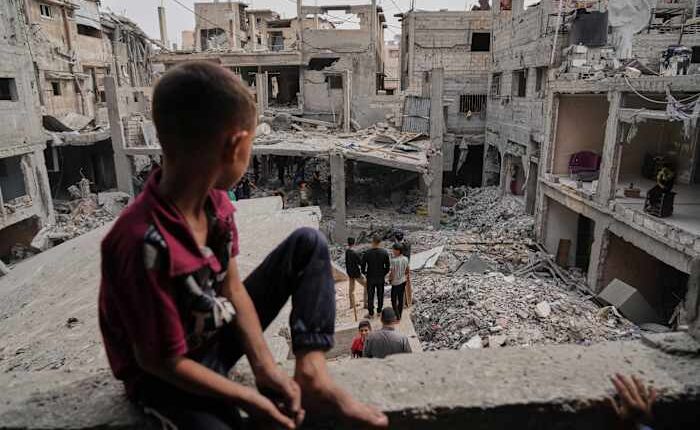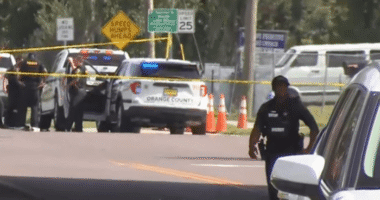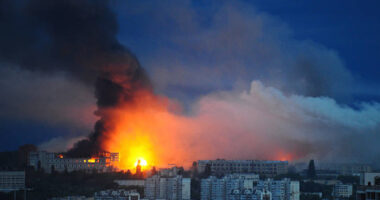
JERUSALEM – The situation in Gaza has entered a grim chapter, characterized by Israel preventing the entry of food and supplies into the region while escalating its bombing campaign.
Humanitarian officials caution that famine threatens to engulf the strip. Doctors say they are out of medicine to treat routine conditions.
Israel is considering a more aggressive ground operation, with plans for a new aid delivery system supported by the United States. However, concerns have been raised by humanitarian organizations that these plans might not adequately address the significant needs in Gaza and could impose limitations on who can receive assistance. The timeline for implementation and the funding sources remain uncertain.
Bushra Khalidi, the policy lead for Israel and the occupied Palestinian territory at the humanitarian organization Oxfam, expressed, “This current phase of Israel’s offensive against Gaza is the most lethal and devastating yet, but the global response has been lacking. Gaza has endured almost two years of suffering, becoming a place where international law is disregarded, and basic humanity is ignored.”
Here’s what to know about the state of affairs in Gaza.
Casualties soar from increased Israeli bombardment
Israel ended a six-week ceasefire in mid-March and resumed its attacks in Gaza, saying military pressure against Hamas was the best way to push the militant group into freeing more hostages. But ceasefire talks remain deadlocked, and scores of civilians have been killed in Israeli airstrikes.
On Friday, Israeli airstrikes killed 108 — raising the death toll over the past three days to more than 200 Palestinians. Those numbers come from the Palestinian Health Ministry, a body directed by the Hamas government that does not distinguish between civilians and combatants.
The strikes — often at night, as people sleep in their tents — have directly targeted hospitals, schools, medical clinics, mosques, a Thai restaurant-turned shelter. The European Hospital, the only remaining facility providing cancer treatments in Gaza, was put out of service.
Israel says it targets only militants and accuses Hamas of using civilians as human shields.
But the death toll has reached the same level of intensity as the earliest days of the war, when Israel pounded Gaza with airstrikes in the aftermath of the Oct. 7, 2023, Hamas attack, said Emily Tripp, executive director of Airwars, an independent group in London that tracks recent conflicts.
She says preliminary data indicate the number of incidents where at least one person was killed or injured by Israeli fire hovered around 700 in April. It’s a figure comparable only to October or December 2023 — one of the heaviest periods of bombardment.
In the last 10 days of March, UNICEF estimates that an average of 100 children were killed or maimed by Israeli airstrikes every day.
Almost 3,000 of the estimated 53,000 dead since Oct. 7, 2023, have been killed since Israel broke the ceasefire on March 18, the ministry said.
Among those killed in recent days:
A volunteer pharmacist with the Palestine Children’s Relief Fund, killed with her family in a strike on Gaza City on May 4.
A midwife from Al Awda Health and Community Association, killed with her family in another strike on May 7.
A journalist working for Qatari television network Al Araby TV, along with 11 members of his family.
Motaz Al-Bayyok, age 1. His older brother, Yusuf, 11, screamed as a shroud was parted to expose young Motaz’s face.
Israeli officials threaten new ground operation
Israel shows no sign of slowing its operation in Gaza.
Prime Minister Benjamin Netanyahu promised this week to use even more force against Hamas, against the objections of families of hostages begging him to agree to a deal instead.
An Israeli official said the strikes Friday were preparatory actions for a larger operation, intended to send a message to Hamas that it will begin soon if there isn’t an agreement to release hostages. The official was not authorized to brief media and spoke on condition of anonymity.
The war began when Hamas-led militants killed 1,200 people in an Oct. 7, 2023, intrusion into southern Israel. Hamas still holds 58 of the roughly 250 hostages it took during its attack, with 23 believed to still be alive, although Israeli authorities have expressed concern for the status of three.
No food has entered Gaza for 75 days, and Palestinians go hungry
Israel has blocked food, water and supplies from reaching Gaza — where the U.N. says the entire population is reliant on aid — for more than two months. Most community kitchens have shut down. The main food providers inside Gaza — the U.N.’s World Food Program and World Central Kitchen — say they are out of food. Vegetables and meat are inaccessible or unaffordable. Palestinians queue for hours for a small scoop of rice.
Food security experts said in a stark warning Monday that Gaza would likely fall into famine if Israel doesn’t lift its blockade and stop its military campaign,
Nearly half a million Palestinians face possible starvation — living in “catastrophic” levels of hunger — and 1 million others can barely get enough food, according to the Integrated Food Security Phase Classification, a leading international authority on the severity of hunger crises.
Israel is preparing south Gaza for a new aid program
Satellite photos obtained by The Associated Press show what appear to be Israeli preparations for a new aid distribution program in Gaza, one that has come under heavy criticism from aid workers.
Satellite photos from May 10 show four bases in southern Gaza — two that are newly built in the last month and two that have been enhanced.
One, at the southwestern corner of Gaza, has been fortified with new walls. A new road connects the base to a sandy expanse of newly bulldozed land.
Another base, in the center of Gaza, appears to have been fortified with new defensive sand berms. Adjacent is a newly bulldozed lot.
The photos appear to correspond to a new aid distribution program being developed by a new group supported by the U.S.
The Gaza Humanitarian Foundation — made up of American security contractors, former government officials, ex-military officers and humanitarian officials — says it would initially set up four distribution sites, guarded by private security firms. Each would serve 300,000 people, covering only about half of Gaza’s population.
The GHF proposal said subcontractors will use armored vehicles to transport supplies from the Gaza border to distribution sites, where they will also provide security. It said the aim is to deter criminal gangs or militants from redirecting aid.
___
Sam Mednick contributed from Tel Aviv.
Copyright 2025 The Associated Press. All rights reserved. This material may not be published, broadcast, rewritten or redistributed without permission.

















